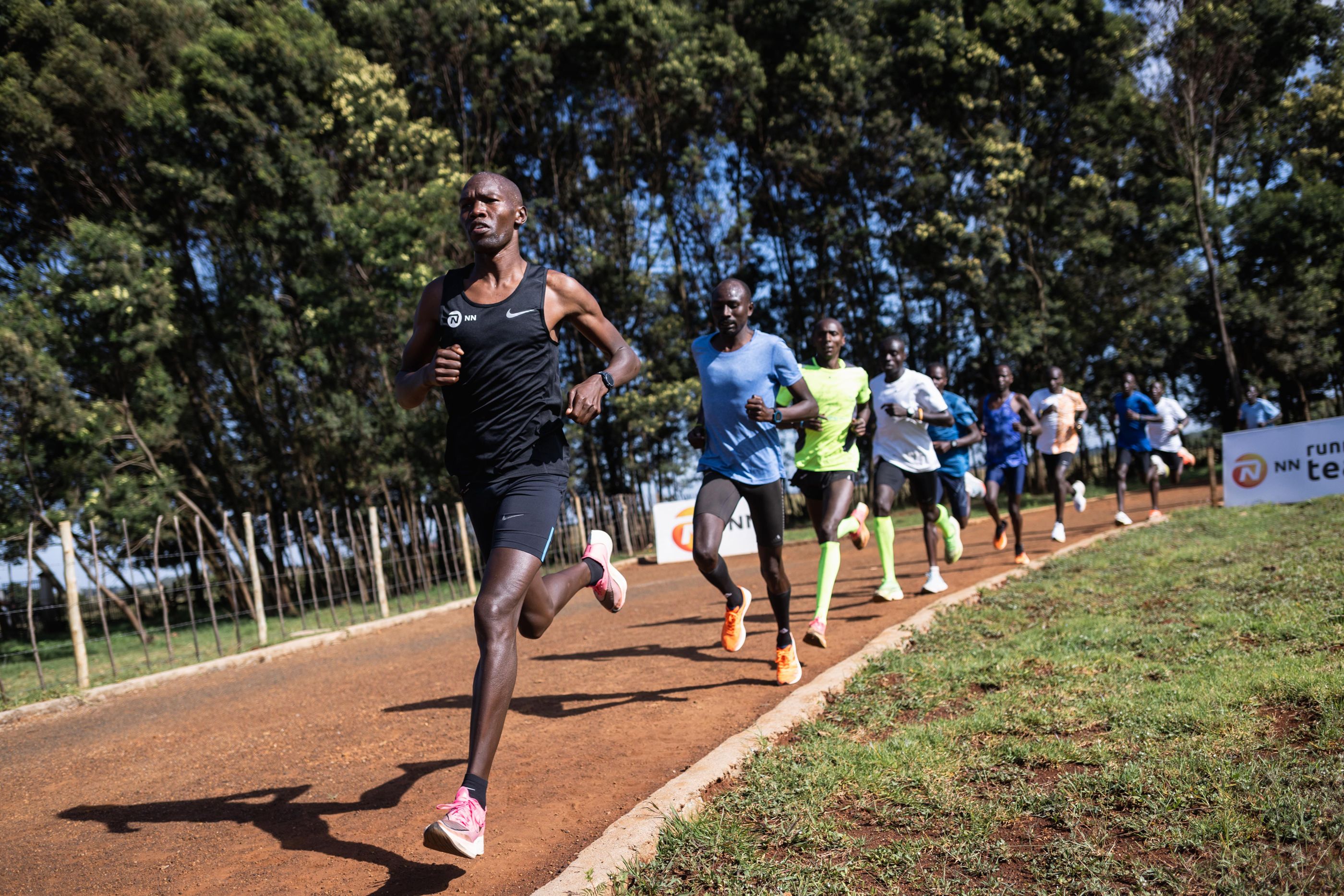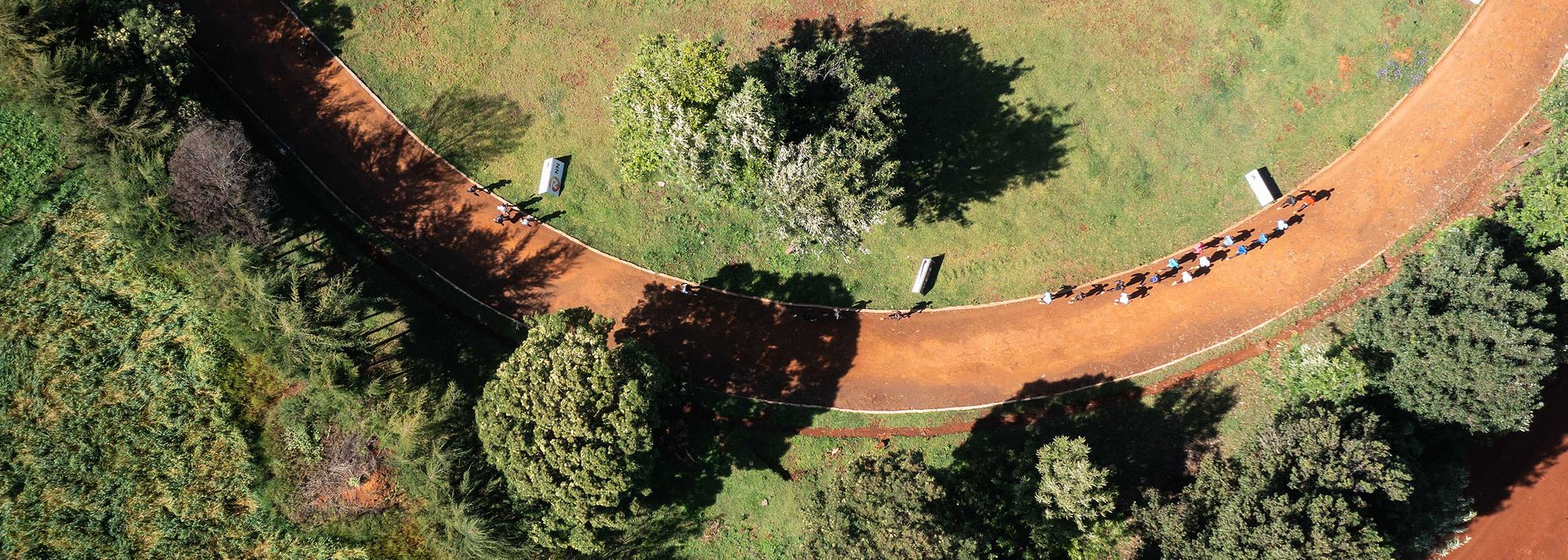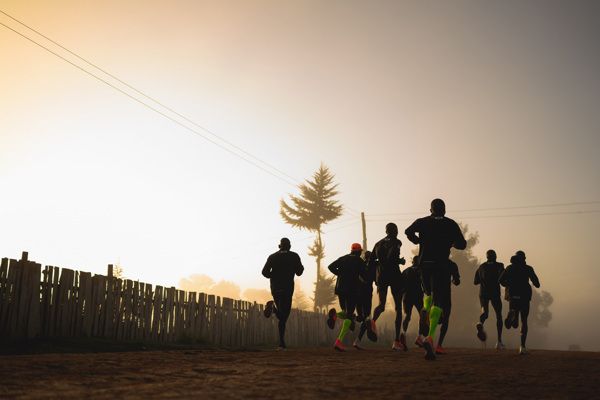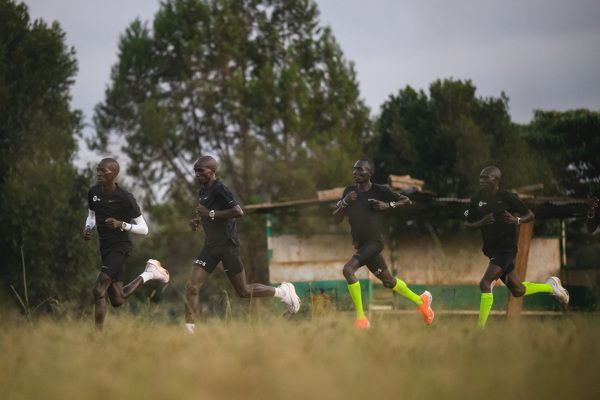Athletes from the Kaptagat training camp do a track session (© Dan Vernon / NN Running Team)
Interval training, repetitions or speed work are terms many people taking up athletics will often hear but what do they mean, where should it fit within your training and what are the potential pitfalls you should avoid when introducing it into your plan?
This guide will help provide some fundamentals.
For the sake of this article, intervals, repetitions and speed work will all be seen as the same general type of training, though in reality some coaches will have slight variances in their interpretations of those different terms.
The theory behind speed training
When aiming to lower a personal best time, many coaches believe that running at paces quicker than or around your goal pace is important. This is for a variety of reasons not limited to:
- Preparing yourself mentally to run at those speeds and learning what it feels like physically
- Stimulating the recruitment of fast-twitch muscles fibres
Fast-twitch muscle fibres are used for short, explosive movements as opposed to slow-twitch muscle fibres, which are less powerful but fatigue slower.
A higher proportion of fast-twitch muscle fibres will increase your top-end running speed while a higher proportion of slow-twitch muscles may increase your overall endurance. Striking a balance will be important to most runners, competing in all but the most extreme ultra-marathon distances.
- Improving your running economy (how efficient you are in terms of the way you run) both at top speeds and at slower paces
Slower running will likely improve your aerobic fitness but will not stimulate the body to produce fast-twitch muscle fibres in the same way speed training does. This is because the body does not require as many fast-twitch muscles fibres to run at slower speeds.
How important speed training is for you will be depend on the races you are planning to partake in, though most distances will benefit from it to some degree.
Are you aiming to complete an ultra-marathon or is the 1500m your goal race?
Think about how important speed is to your running goals.

Athletes training in Kaptagat (© Dan Vernon / NN Running Team)
What does speed training look like?
In the same way that the importance of speed training will depend on what events you are planning for, your speed training will look different based on your planned event.
Runners aiming to run the 1500m may well do fewer shorter reps at higher speeds, with 10,000m runners increasing the length of repetitions and sometimes the volume too.
Please note the sessions detailed below are not introductory sessions and should be worked up to over a period of months not weeks.
Two typical 1500m sessions
- 3 to 4 x 500m with two to three minutes recovery between repetitions. These may be done at your target 1500m pace
- 3 x (800m, 200m, 200m) – three minutes between sets (after completing all the efforts within the brackets), 90 seconds between the repetitions (those within brackets)
Two typical 10,000m sessions
- 8 x 1000m with two minutes recovery between efforts. All run at 10,000m goal pace.
- 1600m, 1200m, 800m, 800m, 1200m, 1600m. Two to three minutes between efforts. These would ideally be run slightly outside 10,000m goal pace for the longer efforts, and slightly inside for the shorter efforts. The idea is to keep the paces reasonably even, with a marginal increase in speed for the shorter efforts if possible.
How speed training fits with your overall training programme
It is impossible to sustain these types of sessions day after day, due to the significant impact each session has on your body.
Many runners choose to incorporate some kind of speed training once a week with some experienced and elite-level runners increasing this where they have more time to recover.
It is important to see how your body responds to these sessions, be honest with the impact they have and be conservative where they may cause a risk of injury.
In order to get the maximum benefit from these sessions, allow your body to recover by running slower than you normally would on the day or two following the session.
The dangers associated with speed training
Runners should be patient and build up to any speed training they do. If you try it too early without preparing your body through some easier running, muscle injuries can be more likely.
Alongside lighter running, strength and conditioning exercises for your calves, quads and hamstrings can help ensure that you are better prepared when you first start speed training.
As mentioned, these sessions will tire you out significantly more than most slower running, so be sure to watch out for the signs of overtraining, such as increased fatigue, excess soreness and an elevated heart rate when resting.
If you experience any of these, it may indicate it is time to back off your training, and be sure to speak to a qualified professional where possible to provide you the best advice.
Finally running at increased speeds may bring with it the temptation of lighter, faster shoes. These can be useful but the less cushioning can cause greater strain on your leg muscles.
Be sure to slowly introduce these to your sessions so that your legs have time to adapt.
Enjoy the training.
George Mallett for World Athletics Be Active







